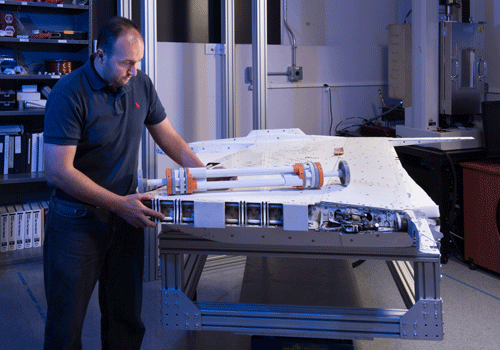Shapeshifting metals might bring to mind Optimus Prime or the Terminator franchise, but recent developments in the field are likely to have more practical applications.
From ground-breaking liquid metals to shape memory alloys, metals that change shape with temperature or electric charges have the potential to revolutionise robotics, computing and the aerospace industry.
For instance, alloys that change shape with temperature could lead to lighter, smaller flaps in aircraft by removing the need for mechanical parts, and electrically stimulated liquid metals could replace mechanical cooling in computers.
Programmable liquid metals
Researchers in the UK have been working on an “extremely promising” discovery: a liquid metal that can be programmed to form different three-dimensional shapes with the application of electrical charges.
“This is a new class of programmable materials in a liquid state which can dynamically transform from a simple droplet shape to many other complex geometry in a controllable manner,” said Yutaka Tokuda, research associate for the project at the University of Sussex.
Although Tokuda team’s research is in its early stages, the evidence they have collected has got them excited about exploring potential applications, including soft robotics, flexible displays, computer graphics and smart electronics.
Digital control
This research has been able to use computer-controlled electric fields not just to change the shape of the liquid metal, but to move it in space.
According to Professor Sriram Subramanian from Sussex University, liquid metals have a lot of promise for flexible applications due to their high liquid state conductivity, and ability to transition from liquid to solid state at room temperature.
Subramanian said that researchers have a long-term vision to one day use digital control of flexible objects to create “intelligent, dexterous and useful objects that exceed the functionality of any current display or robot.”
Saving space and weight in the air
Another application where shapechanging metallic components would be handy is aeroplane parts.
According to engineer Othmane Benafan from NASA’s Glenn Research Center, conventional aircraft technology has a lot of essential moving parts: for steering, reducing turbulence and getting on and off the ground.

Credit: NASA
But the hydraulics and mechanical components that move them are heavy and space hungry.
Some companies, including Boeing, are developing parts made from shape memory alloys which are around a fifth to a tenth the size and weight of their mechanical counterparts.
Shape memory alloys toggle between different shapes when they are heated up and cooled down. They were first developed in the late 1950s, but widespread implementation in the aerospace industry has been held up by understandably strict aviation design regulations, and environmental challenges such as temperatures which can range from -50 degrees C in the air to 40 degrees on the ground.
But there are signs that this could change in the next decade. Experts in the US have developed a certification standard, and in January, NASA successfully tested a plane with folding wings made from shape memory alloy.
While there is still a long way to go in the field of shapeshifting metals before they are put to use in our intercity air commutes or laptop displays, it is reassuring to know that warmongering robots won’t be their primary application.
